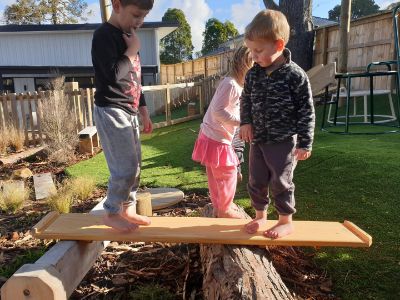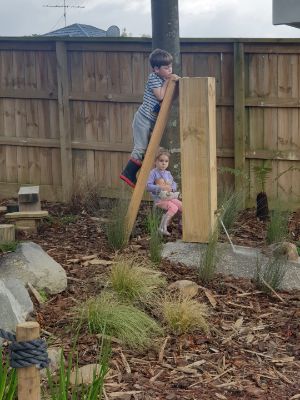LATEST STORIES
How the vestibular system supports children to get ready for school
You’re probably wondering what your vestibular system is?! In simple terms, this is your balance. Every child needs to develop their vestibular system as a part of being ready to sit down, read, write, and do mathematics. This is just one of the many things play promotes for children to be school ready.
What better way to develop your vestibular system, and weight concepts than to carry around a plank and find places you can climb or balance on it with your friends.
Today, I watched as the children placed planks around the playground, over walls, logs, sandpits, and seats. As the children placed the plank around the playground, they climbed on top of it. They noticed it was unsteady, and placed objects underneath it so they could climb on top safely. As they balanced, they moved slowly along the planks together, creeping cautiously forward so they didn’t fall off. They used their current knowledge of the concepts of weight, as they used their own bodies to counterbalance another. The photos show them inquiring through play as they work together, showing each other trust, and camaraderie.
There are many skills children need to experience before they can completely retain reading, writing, and mathematic knowledge effectively. You can support your child’s vestibular skills at home. Here are 10 things you can do at home to support your child’s balance:
1 - Play a game of flamingos where you practice standing on one leg. Have a competition ‘who can balance the longest on one leg wins’
2 - Lay your child on a skateboard with a rope tied to it, allow them to propel themselves forward and use the rope to pull them back to you.
3 – Dancing, twirling
4 – Bouncing rhythmically on a large ball
5 - Walk up and down hills
6 - Lie on couch with head down looking at ceiling
7 - Pulling your child along on a blanket
8 - Riding a bicycle
9 - Swinging in a blanket
10 – A Swing - Swinging provides some of the most intensive vestibular input.





